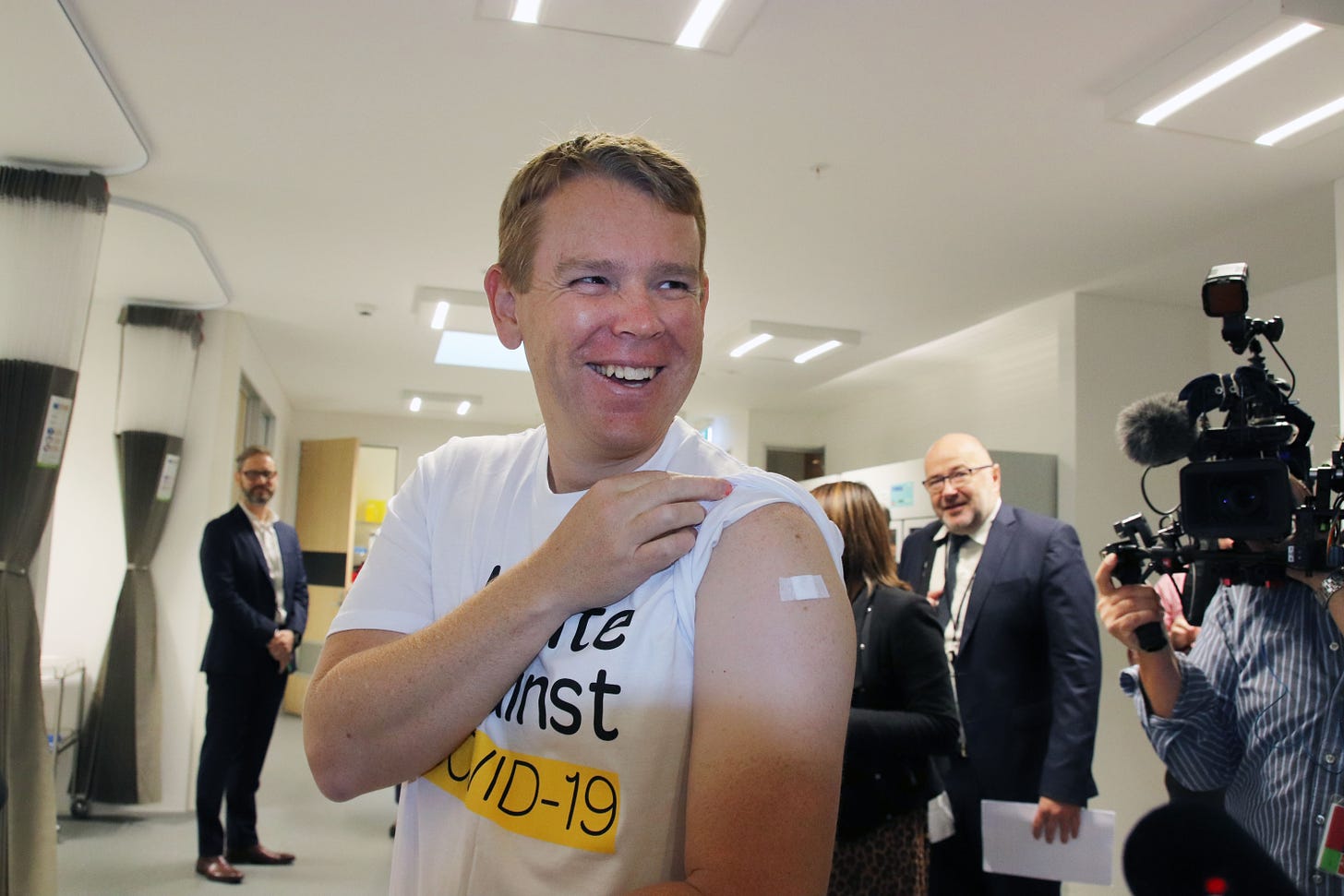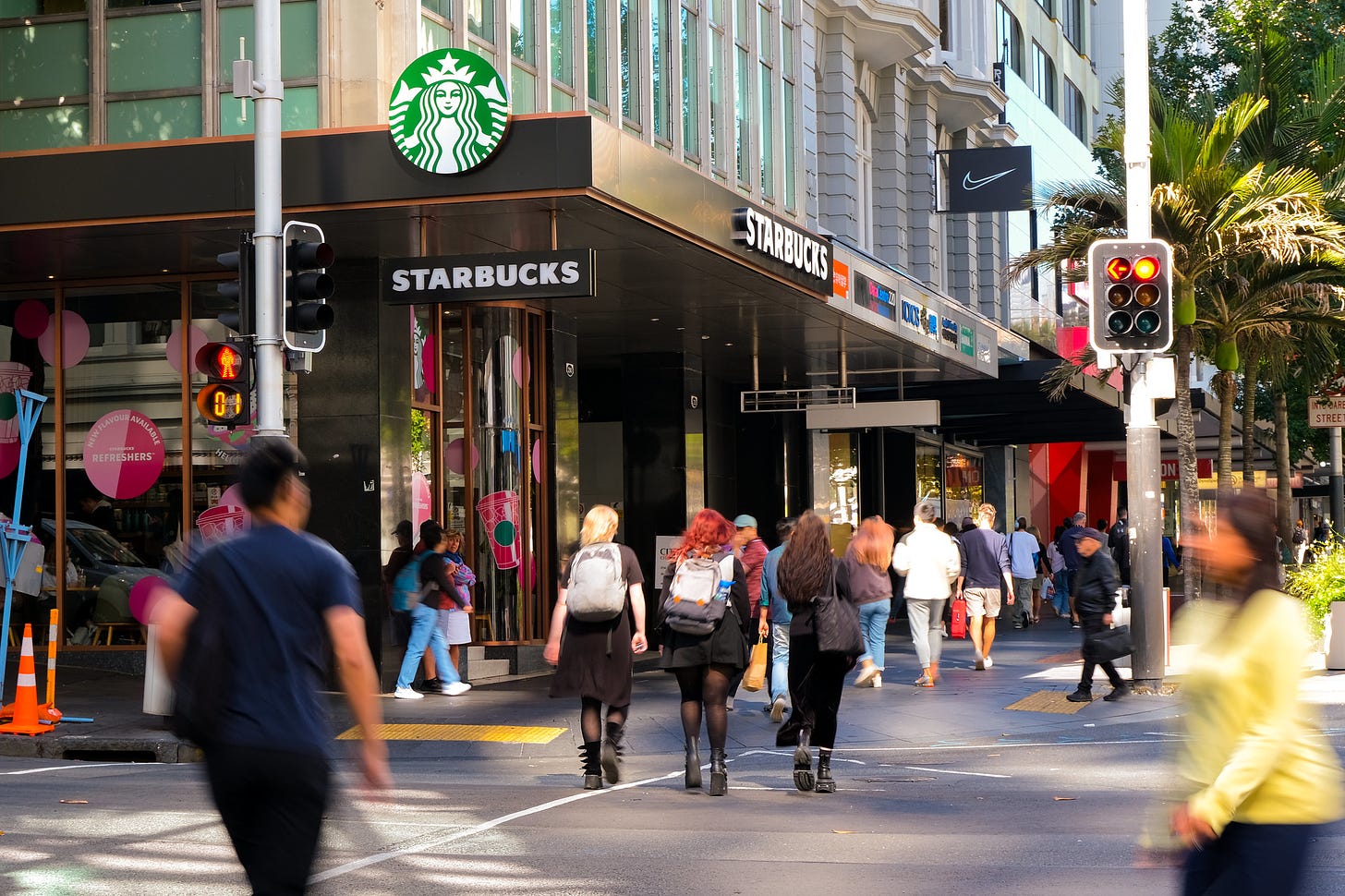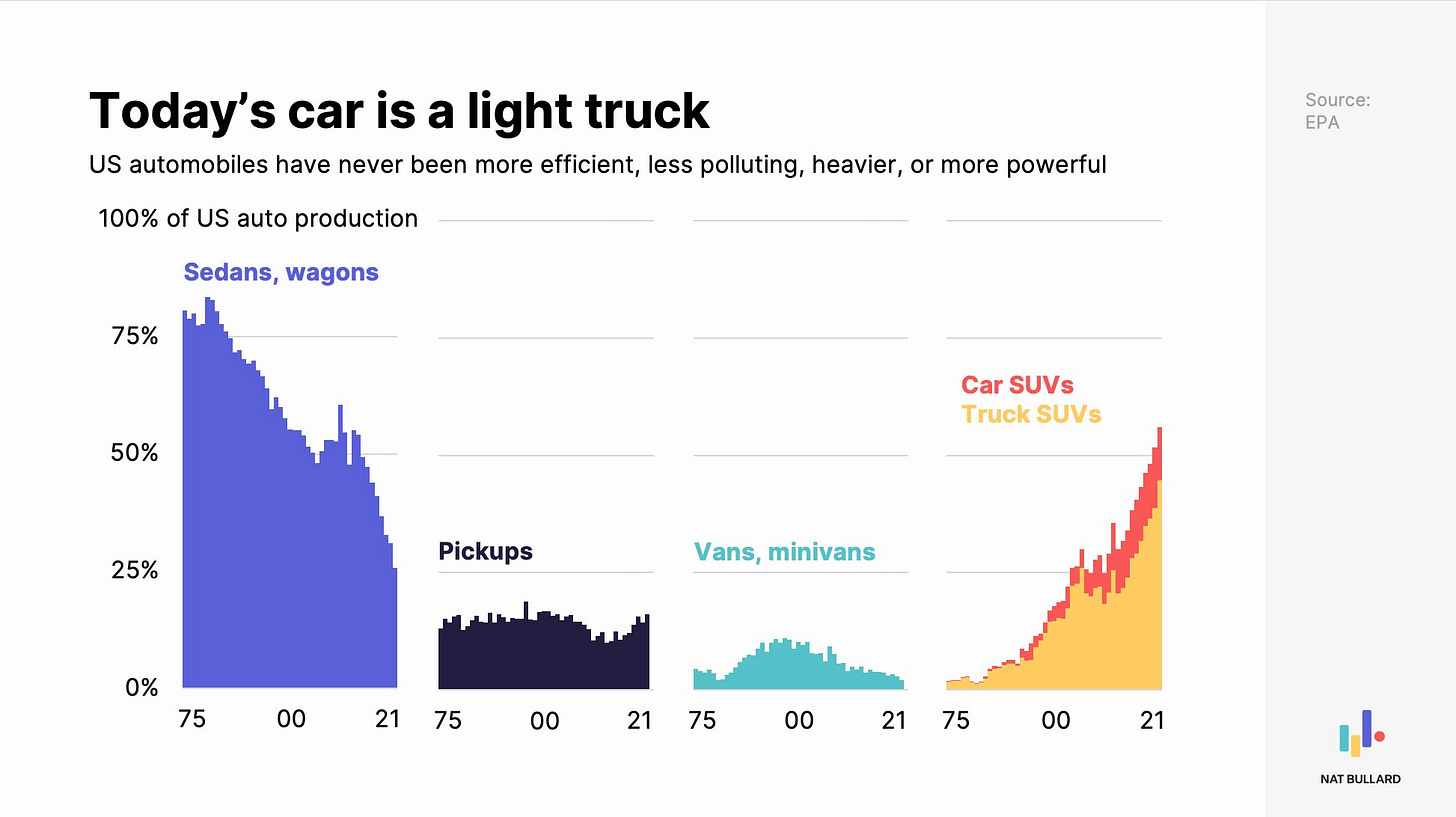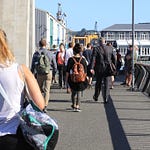
TL;DR: The Government has just loosened migration settings dramatically in a last-minute attempt to stop a systemic health system crisis turning into a catastrophe over the winter, just ahead of the October 14 election.
Yet again, a short-termist and reactive policy is being used to try to solve a structural problem, rather than challenging or changing the politically difficult conditions creating the problem.
This latest lever-pulling is unlikely to work, and will only accelerate our ‘churn and burn’ economic approach that sucks in as many skilled and unskilled workers as possible to replace the locally-born-and-trained renters who are opting for much higher disposable incomes after housing costs in Australia and beyond. The escape valve of residents leaving for Australia is widening under the intense pressure of low after-rent disposable incomes post-covid, and because of a more welcoming approach from Canberra (that’s about to look even more attractive).
So the Government has given in to its first instincts of adding more population fuel to the engine of our political economy. There are many signs the engine is about to blow a gasket, as I show below, and which are evident in this report issued by the Health and Disability Commissioner this morning into delays of up to four months in cancer patients seeing specialists for the first time in the Southern DHB (now Te Whatu Ora Southern).
Usually at this point in my daily email, I put the rest of it behind a paywall for paying subscribers who support my work reporting and commenting on housing unaffordability, climate change inaction and poverty reduction. But sometimes I open it up early for all to read, listen to and share immediately. I thank paying subscribers for their support and opportunity to do this, and welcome more into the community of paying subscribers here, who have access to my ‘chat’ posts and can comment below. I have made this post and podcast fully available to all today.
The escape valves whistling in our political economy
PM Chris Hipkins and his Cabinet have again adopted the same ‘fast thinking’ and reactively incrementalist approach to Aoteroa’s structural problems embedded throughout a low-wage, low-productivity, high-housing-cost and high-population-growth society. It’s an approach that avoids debates about Aotearoa’s three-decades-long ‘third rails’ around tax, public debt and size of government that both Labour and National have adopted and reinforced.
In essence, both main centrist parties running our Government have been locked in to twin fiscal guide-rails of keeping tax and public debt at or below 30% of GDP for 30 years in order to deliver regular tax cuts and keep interest rates low so median voters can get on with the real game of building their wealth via leveraged and tax-free gains on residential land. It was done on the assumption that Aotearoa already had enough infrastructure for a population that would age and flatten, but those assumptions have dissolved under the weight of the undeclared and undebated policies of the last 20 years of buying re-election, low Budget deficits and debt and nominal GDP growth through the highest migration-led population growth in the developed world.
It has worked for those homeowners and their families if they were able to leverage up enough to fund their kids’ first-home-buyer deposits to ‘get-on-the-ladder,’ all the while hoping those kids don’t blow out of the escape valve through the one-way OE and have the grandchildren overseas. The gaps are now so large between land owners and renters, and the size of the required house deposits are now so enormous, that few can kid themselves any more that anyone can viably plan to start a family in any stable or prosperous way without the help of family members or a winning Lotto ticket.
The pressure valves at our borders are whistling
So the pressure is building inside our political economy to boiling point. There are various escape valves and stress indicator dials showing it’s not working for most in the short term, or everyone in the long run. The constant drip-flood-drip of residents leaving permanently is one such escape valve. It was mostly staunched by conservative Australian PM John Howard’s 2001 move to restrict Kiwis’ residency rights in Australia. That is about to be ended by Labor PM Anthony Albanese within weeks when he is expected to announce Kiwi residents in Australia will get full rights to health benefits. No wonder Hipkins is scrambling to relax restrictions on the other side of the migration ledger.
The other signs of stress are most evident in our health system, with A&E waiting times blowing out, ambulances stuck on A&E ‘ramps’ for hours, surgery wait times gaping open, staff churn and burnout rates surging, mental health incidents and unmet need rampant, and the ultimate measures of health failing to improve. Then there’s the stress in our housing system around social housing wait lists quintupling within the last five years, a record-high prison population and growing inequality in both health and education results that correlate closely to household wealth and income.
All this works until the ‘engine’ runs out of oil and blows a head gasket. The oil for the engine is people able to work and pay enough PAYE and GST to avoid an unsustainable rise in budget deficits and debt caused by the social, environmental and health costs overwhelming the existing structures of Government. The pressure ever-downwards on Government spending and debt eventually blows out the sides in the form of labour shortages, full prisons and massive increases in unmet need for spending in health and education. Eventually, the money will have to be spent to build prisons, hospitals and barbed-wire fences, or to invest in reducing poverty. Keeping a sinking lid on a growing population with growing needs and new ways to stay healthier just does not compute in the long run.
Here’s an example from the report into Te Whatu Ora Southern’s cancer treatment services. It is a quote from a cancer oncologist called ‘Dr C’ in the report (bolding mine):
“When we had melanoma drugs funded, we predicted very clearly over the course of one to two years how many new patients we’d need to treat and what new number of clinic appointments would be needed, how many new nurses would be needed, how many more scans would be needed … and we said we need more staff to deal with this, because this is new work, and we were told ‘you have to manage within existing resource’. And so, that’s what happens repeatedly, when we make repeated business cases, make repeated presentations on the waiting list, and the staff FTE does not grow.” Dr C quoted in this morning’s report by the Health and Disability Rights Commissioner.
The main escape valve is net emigration of residents and resignations of burnt out staff from public service providers such as hospitals and schools. The warning whistles are the crises in our health, justice and education systems. Simply opening the migration throttle just puts more pressure and heat and speed into the engine. It doesn’t fix it. To do that, Aotearoa needs to fundamentally change the incentives for public and private investment in people (health, education & skills), R&D, infrastructure, housing and the environment, as well as substantially increase the scale of public delivery of health, education, transport and water.
In my view, that would require introducing a tax on unearned wealth on residential land to pay for the increased public investment funded initially by debt, and to flip the incentives for private investment away from land and towards investing in technology, skills, intellectual property and, ultimately, productivity enhancement. I’ll talk about these potential structural changes in future emails and podcasts.
So what just happened?
PM Chris Hipkins announced last night the addition of chiropractors, osteopaths, social workers, hospital play therapists & counsellors, along with 27 other health occupations, to the ‘Green List’ for work-to-residence and straight-to-residence visas, as detailed in this Immigration NZ announcement. The ‘Green List’ is the gold standard of the visas offered to workers overseas for them to come here.
Typically, we have offered temporary work visas with the assumption the need was temporary and the workers could be kicked out within a few years to avoid acknowledging the population was structurally larger and required requisite investment. However, often there was a nudge-nudge-wink-wink implication to temporary workers and international students that a permanent residency could be magicked up if the worker was compliant enough for long enough and the employer could recategorise the work as essential enough for a permanent visa. Often, the nudges and winks were either deliberately or subconciously fraudulent and abusive. They reached their extreme worst levels in the period from 2011 onwards to 2016 when there was a Government policy to double export education revenues, partly by dangling or offering residency as a carrot. It worked to expand nominal GDP with continued low wages, low interest rates and budget surpluses, but led to housing shortages and migrant abuse.
‘No more hints and winks. Give us residency up front’
Offering permanent residency up front removes almost all the risk that Immigration NZ could reject an application after a candidate has moved across the world and allows a candidate to bring in partners and children without questions being asked, and with full residency rights to education, health and welfare benefits. It is a job offer with a golden ticket attached.
Typically, the Green List has been reserved for the highest-paid and most-educated professions, especially the ‘straight-to-residence’ Tier 1 professions, which have included the likes of Cardiothoracic Surgeons, Neurosurgeons and Mechanical Engineers1. There were already 57 health professions on Tier 1 of the Green List. Last night’s changes shift Anaesthetic Technician, Audiologist, Medical imaging technologist, Medical laboratory technician, Medical radiation therapist, Occupational therapist, Podiatrist and Sonographer from the ‘Tier 2’ work-to-residence visa (where an applicant has to work for two years in the role before getting residency) to the Tier 1 ‘straight-to-residence’ visa, through which residency is granted immediately. It is a job offer with a winning golden kiwi ticket attached.
Where once we only offered the golden tickets to rocket scientists and brain surgeons, we’re now offering them to osteopaths and deck hands.
Hipins also announced the addition of 32 new health roles into Tier 2 of the Green List, including (bolding mine): Addiction practitioner/alcohol & drug clinician, Audiometrist, Chiropractor, Clinical dental technician, Clinical physiologists (sleep, renal, exercise, respiratory, neurology, and cardiac), Counsellor, Dental specialists, Dental technician, Dental therapist, Dentist, Dietician, Dispensing optician, Drug and alcohol counsellor, Enrolled nurse, Genetic counsellor, Medical laboratory pre-analytical technician, Medical resonance imaging technologist, Nuclear medicine technologist, Nurse practitioner, Optometrist, Oral health therapist, Orthotic and prosthetic technician, Orthotist/prosthetist, Osteopath, Paramedic/emergency medical technician, Perfusionist (cardiac), Pharmacist, Physiotherapist, Play therapist (hospital), Social worker, Speech language therapist, and Sterile processing technician.
But wait, there’s more…
Buried amid the news about the health role additions, Immigration Minister Michael Wood also announced ship’s masters and skippers, and deck hands will be added to the sector agreement for bus and truck drivers announced in December, which now have a time-limited pathway to residency.
So why was all this needed? Essentially, Aotearoa is running out of locally skilled and trained workers in these roles and our current wage rates are not high enough to compete overseas for these workers looking to leave the likes of the UK/US/Canada/India/Europe/South Africa/China/Australia and the Philippines with other countries looking to solve their own growth and infrastructure problems such as Australia, Canada and the UK in particular. Governments are adding residency bonuses to bolster the attractiveness of wages. Our Government has to pull our residency bonus levers extra hard, given our wages are 20-50% lower than in the likes of Australia, Canada and the United States. Where once we only offered the golden tickets to rocket scientists and brain surgeons, we’re now offering them to osteopaths and deck hands. It’s not rocket surgery — it’s immigration policy and economic strategy.
A structural problem or a temporary problem?
This all makes sense in a tactical or short-term sense if you believe the problem is short term and once the positions are filled the lever can be pushed back to a ‘normal’ level. But that is debateable at best. Clearly, covid has had an impact globally, which both increased demand and supply, but Aotearoa has a particular problem with its health infrastructure (both physical and workforce) being under-resourced and under-invested for at least the last 20 years. Staff numbers and systems were put under increasing pressure by relative wage deflation, capital spending freezes and a fundamental under-investment in hospitals and clinics to keep up with population growth by Governments of both flavours.
As with any complex system, there is often some redundancy and ‘fat’ that can be found in both people and assets that can be burned when it is under pressure to ‘sweat’ those ‘assets’ as hard as possible without having to add fundamental capacity, or to reorganise to use new technology or systems. In essence, you can keep the system going for a while by shuffling things around and adding a few extra people here and there, without having to take the painfully-large capital and employment decisions to build entirely new hospitals or employ thousands of new doctors and nurses.
This is what the DHB reorganisation was partly about: an attempt to find efficiencies elsewhere in the system behind the front lines so it could cope with the extra demands without having to simply throw many more hospitals and expensively trained people at the problem.
So why not just address the structural problem?
Solving the structural problem would require a change in both the size of Government and public investment to address the underlying poverty issues causing the health crises (obesity, diabetes, under-vaccination, poor access to GPs, dental health, housing-related respiratory and skin diseases, and mental health issues at much higher rates among the poorest communities), and then to meet the unmet need with a much larger health system as a share of GDP.
It’s not rocket surgery — it’s an immigration policy and economic strategy.
That would require higher taxes and higher debt. Both National and Labour have committed to keeping taxes low and public debt low to keep dangling the prospects of tax cuts, middle-class welfare and to keep interest rates low to enable the leveraging of land values for tax-free gain.
A short term ‘solution’ to avoid a hard debate

The Government has just pulled hard on the migration lever to solve a health sector crisis that has been decades in the making because of low investment in health infrastructure, technology and training, combined with much-faster population growth than the infrastructure could handle.
Rather than invest in technology, training, hospitals, clinics or stopping the flood of poverty-related related health issues overwhelming our health system (or stopping the population growth itself), Cabinet has decided to keep the low tax and low debt guiderails in place and instead suck in more bodies to ‘solve’ a problem seen as short term and just work the existing ‘assets’ in our health and social systems even harder, with even more people.
It’s not working, simply by looking at the ‘churn’ figures on either side of the Tasman. Hipkins said yesterday there had been 3,600 applications for health sector ‘Green List’ visas since December, when the first batch of extra health industry roles were put on the list. RNZ’s Rowan Quinn reported last week the Australian Health Practitioner Regulation Agency had recorded 4,951 New Zealand-based nurses had applied for registration to work in Australia since August. That is just nurses. There are 65,000 nurses in New Zealand and Te Whatu Ora estimated last year there was a shortage of 4,000 nurses.2
It is ‘fast thinking’ in a group-think way.
Here’s how this is playing out in the hospitals and clinics up and down the country right now:
Rotorua nurse Tracey Morgan had her last day at her community clinic on Thursday and was planning to go to Australia. She was emotional, staying on hours after she was due to finish to help the only other nurse working.
"I didn't realise this day would come so fast and that I'd be ... real sad," she said.
Morgan, a former president of the union the Nurses Organisation, said like many nurses who have walked away, she loved her job but was burnt out.
"I didn't want to be one of those numbers, but they're not investing enough in the nurses that are here to keep us." RNZ
Months out from an election it could lose and weeks away from a winter of jam-packed A&E departments, overflowing wards and booked-for-weeks GP diaries, the Labour Government did what every small business and voter does when under intense pressure to deliver in the short term. It went for the easy short-term fix that no one has challenged publicly and/or loudly. It is loosening migration settings to use the ‘free’ lure of residency to solve a long-term problem.
National said last night the Government should have done it sooner and harder. It is promising to pull this lever and others if it wins in October, but without any discussion about resourcing or planning for extra infrastructure or training, or what level of population it thinks should be planned for and funded.
Should we go for population growth properly, and consciously?
No one is debating whether this latest easing of migration settings, the fourth in less than 12 months, is either sustainable or a good idea. Everyone has just pointed to the queues at A&E and the staff shortages and reached for the obvious short-term ‘fix’. It is fast thinking in a group think way.
Neither National nor Labour are asking themselves or voters the basic questions of:
how many extra people will need to be housed, transported, educated and kept healthy because of this change in policy?
do we have the infrastructure already in place to handle that population, and what level of ‘churn’ do we want in our population (and also what level of churn will Australia accept given it is the recipient of most of it)?
what is or should be the long-term ‘carrying capacity’ population of Aotearoa in an Asia Pacific region where 100 million rich climate refugees will want to pay to move and live here? and,
what level and structure of taxes, public investment, public debt and size of Government are sustainable with that agreed and planned-for level of population?
In my view, Aotearoa should be debating and planning for a population of 16 million by 2100, given:
that is what our population will grow to if we continue with the 1.5% per annum growth rate we have accidentally-on-purpose generated over the last 20 years;
the most politically acceptable way to grow our way out of the existing $200 billion infrastructure deficit is with the help of imported workers; and,
we may well not have a real choice, given the effects of climate change will drive those 100 million climate refugees here anyway from the likes of China, India, the Philippines, Indonesia, Malaysia and South Africa.
I will write and talk about this issue in more detail in future podcasts and emails via The Kākā. Meanwhile, I’d suggest reading this book by Nobel-winning behavioural economist and personal hero Daniel Kahneman called: Thinking, Fast and Slow.
Substacks of the day
My diary for this week
Wednesday - Stats NZ to publish NZ electronic card transactions data on retail trade for March at 10.45 am NZT. Stats NZ is due to publish its NZ Freshwater 2023 survey at 10.45 am. US CPI inflation data for March is due at 1.30 am Thursday NZ Time. Economists expect US monthly core inflation of 0.4% vs 0.5% in February and annual core inflation of 5.6% vs 5.5%.
Thursday - Australian employment data for March is expected to show jobs growth of around 20,000 (vs 65,000 in February) and an unemployment rate of 3.6% (vs 3.5% in February)
Friday - BNZ BusinessNZ Manufacturing PMI data for March due at 10 am NZ Time. Stats NZ to publish migration and visitor arrivals data for February at 10.45 am.
Next week
Tuesday April 18 - REINZ is scheduled to publish its March sales results at 9 am NZ Time.
Chart of the day
Hedonic adaptation in automotive form

Ka kite ano
Bernard
Rocket Lab is currently advertising on Seek for eight Mechanical Engineers eligible for Tier 1 ‘straight-to-residence’ Green List visas.
RNZ reported last week Te Whatu Ora did not currently know what the nurse shortage number was.
















Accelerating our churn and burn economy